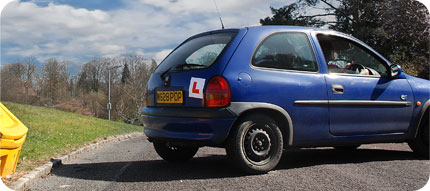6.0 Education and driver confidence

The better the driver education and training motorists receive, the better the driver they are likely to be. Driver training needs to span everything from attitudes, such as courtesy to other drivers, to the dangers of driving under the influence. It also needs to include sufficient training about the vehicle itself to enable a driver to ensure their vehicle is safe and roadworthy.
6.1 Learning to drive
Under the current system, most young people are not formally taught about driving until they turn 17 years of age. In the US – ‘Driver Ed’ starts at 14 or 15 depending on the state that they live in. However, while UK motorists do not support a lowering of the age at which young people can start to take lessons on public roads, 62% think they should be able to take lessons off public roads before age 17 – with three in ten supporting 16 years and almost one in five, 15 years old. There is also strong support for teaching driving theory earlier – with 84% supporting this – 22% at age 16 and 21% at age 15. In addition, over two thirds of motorist would like to see the rules of the road included as part of the school curriculum. This was supported by more than seven in ten for people over 45 years old and by three quarters of rural drivers who perhaps recognise that their children will have a similar high level of car dependence to themselves. More than half of motorists also support re-testing through a motorists’ driving lifetime.
There are also issues surrounding the test itself. A recent report from the Institute for Advanced Motorists found that drivers who think simply gaining years of experience on the road is enough to improve their driving are wrong. According to the report, what makes the real difference is having extra coaching, just as it would be in any other activity. Drivers are more likely to blame chance or bad luck, if the only training they've ever had is those early driving lessons. But they're more likely to take responsibility for avoiding and responding to incidents if they've taken the trouble to try to improve their skills later in life .
"A lot of car manufacturers now run off-road programmes with teenagers to experience driving before the age of 17. This is a positive move, but we need to recognise that it takes a long time to learn to drive safely – experience needs to be gained both before and after passing the test."
Nikki Rooke
Head of Communications, Society of Motor Manufacturers and Traders
The Swedish Government conducted a study, comparing the driving behaviour of two groups – one where pre-licence age drivers were given early tuition and the other where they learnt to drive normally. The result was a 41% decline in accidents in the group given early education.
6.2 Car maintenance
 As cars have become more complicated, it has become increasingly difficult for motorists to perform all but the most basic maintenance. But even this is beyond a significant proportion of those who drive. This is worrying, particularly when considered alongside the trends reported earlier that motorists are leaving longer between services and cancelling or reducing their breakdown cover.
As cars have become more complicated, it has become increasingly difficult for motorists to perform all but the most basic maintenance. But even this is beyond a significant proportion of those who drive. This is worrying, particularly when considered alongside the trends reported earlier that motorists are leaving longer between services and cancelling or reducing their breakdown cover.
-
Two in five motorists are not confident about changing a wheel and 48% have never done so. 62% of women, but only 11% of men lack this confidence, while, 61% of motorists aged 60-69 are very confident in doing so against only 22% of 17-24 year olds.
-
A third are not confident enough to change a light bulb in their car, with 42% never having attempted it. 54% of motorists aged 60-69 are very confident in doing so against 30% of 17-24 year olds.
Confidence in their ability to carry out basic maintenance, including checking tyre pressure and tread and checking the oil, was lowest for young drivers in all tasks. This yet again highlights how their ability to maintain their car in a safe and roadworthy condition is being hampered by a lack of training as part of the process of learning to drive.
6.3 Older drivers
As the number of older drivers on our roads continues to increase, society is still seeking to find the appropriate balance between maintaining the mobility of an ageing population and ensuring that road safety is not threatened by ageing drivers no longer able to deal with the challenges of our congested roads. However, only 15% of motorists rated this amongst their major concerns. There is, never the less, slowly growing support for introduction of further checks.
-
27% of motorists think there should be a maximum age for driving – up from 24% last year and 22% in 2010.
-
19% think elderly motorists should be restricted to daylight driving – up from 16% last year and 14% in 2010.
7.0 Conclusion
5.0 Safety and security